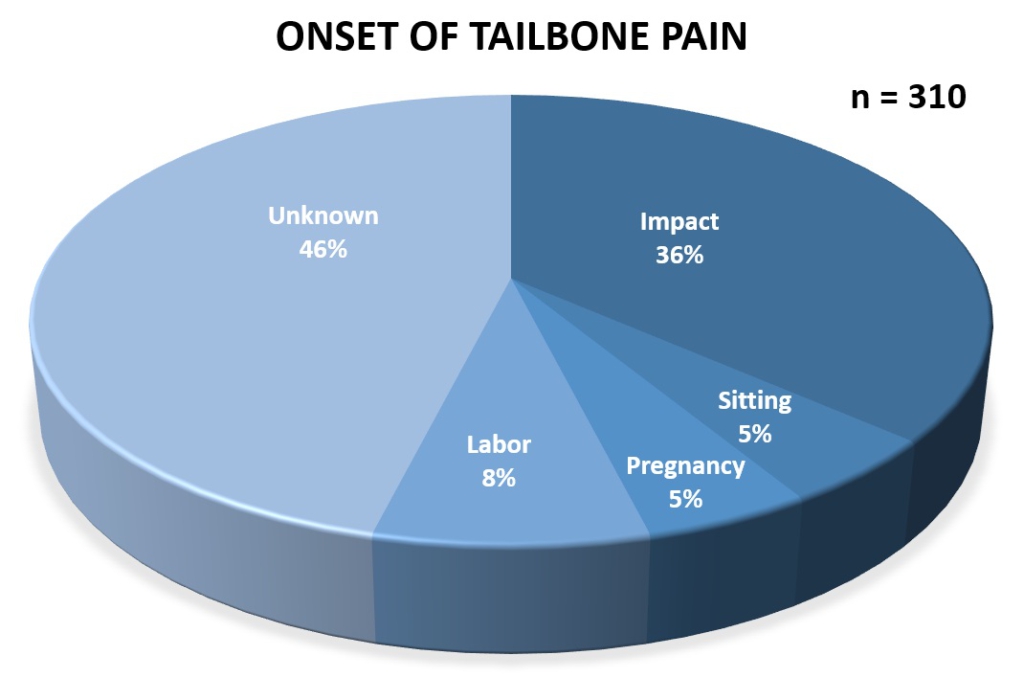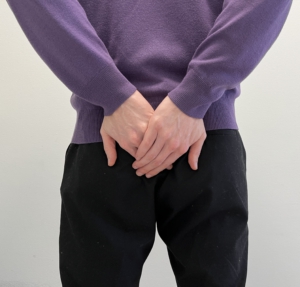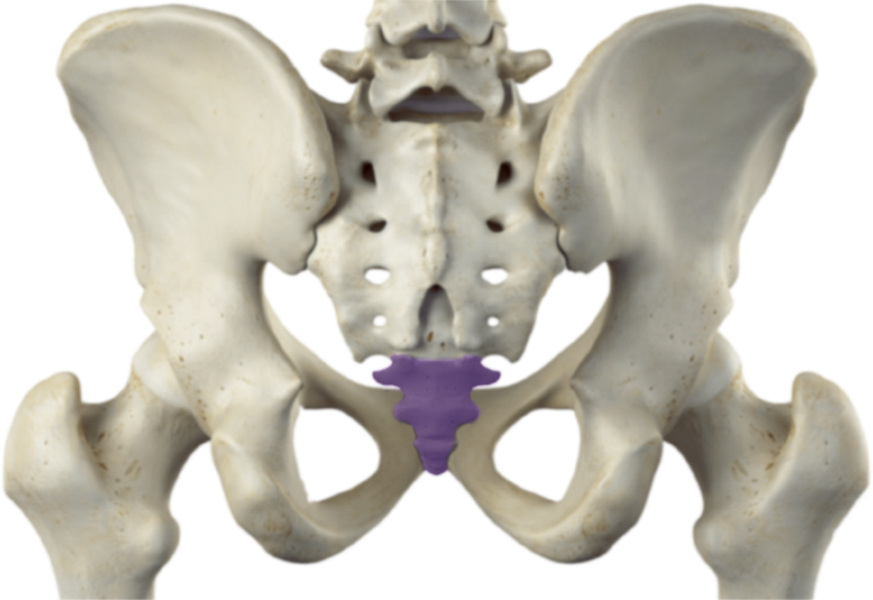Tailbone pain

Tailbone pain almost always presents itself as a local pain at the tailbone, the os coccygis. The official name is coccydynia, which translates as pain at the tailbone.
However small the tailbone is, the pain can lead to a lot of problems and restrictions in daily life.
On this page I want to share knowledge and give insights about the tailbone and tailbone problems.
The tailbone
The tailbone is the lowest part of the spine and consists of a few small vertebrae. It mainly moves where it is connected to the sacral bone that lies above it. It is probably called the tailbone because this is where our tail would be if we had one, or are the remains of it if we actually did have one.
There are quite some people that think the tailbone is located at the level of the belt. It is actually all the way down, at the bottom of the pelvis, just a little bit behind the anus.
The origin of tailbone pain
I have seen patients with tailbone problems between 9 and 81 years old. They were mainly female, although only in a small amount of cases pregnancy and labor were responsible for the onset of the problems.
Problems at the tailbone can start because of multiple reasons. Classically it is because of falling on the butt, like my daughter demonstrates here in this video. The problems can also occur after a long time of sitting in a non-optimal way or after childbirth. Although the biggest group of patients I saw, had no idea what caused the problems.
As mentioned before, there is not a lot of knowledge in the medical and therapeutic world about the tailbone and tailbone pain. Therefore I started to gather data myself the last few years.
This is what I encountered as the reasons that people mentioned as the start of their problems:
De reason for tailbone pain

In the literature often is referred to an increased mobility or instability of the tailbone as the most important reason for tailbone pain. This can be a logical explanation after a traumatic event like falling down or child birth, but as been shown in the statistics here, it can’t explain the problems for at least around half of the patients. In the (physio)therapeutic practice we also encounter an underlying disrupted biomechanics in the joints of the tailbone, but rather in a reduced mobility that is often accompanied by a sidewards misalignement of the tailbone.
Problems due to a reduces mobility and a disposition to one side is hardly recognised in the literature as a probable cause for tailbone pain, although it can be found in almost every patient we examine. This discrepancy with the literature can be explained because almost all research is being done by physicians and they have from their educational backgrounds less focus on biomechanics, where this is the specific expertise of us therapists. This inspired me to write a scientific review about the qualities and shortcomings of the current paradigm about tailbone pain, what has a direct influence on the choice for treatment.
Where most therapists and doctors barely have any knowledge about tailbone problems, it also is understandable that the physician that does know more about it still doesn’t advise the option of physiotherapy for the patient. The biggest part of the hundreds of patients that consulted me for their tailbone problems, found me after doing the research about the treatment options themselves.
Last but not least there are also other explanations for tailbone problems. Therefore we must look beyond the regular medical and paramedical care en to a more holistic approach. The pelvis and especially tailbone area are very sensitive for the influence of stress and mainly unsafety. This aspect, where Easten medicine has more to offer than Western healthcare, is hardly being addressed in the courses about tailbone pain and I personally always take into account as a potentially important factor of influence for tailbone problems. More about the holistic approach of tailbone pain you can find on the page Treatment.
The pain presentation

Tailbone pain presents itself almost always as a local pain just behind the anus and the pain often is easy to trigger by applying pressure at this spot. Sitting is for most people the most important trigger and for some that is mailnly on hard surfaces and for others more on softer surfaces. Also rising from a sitting position is often mentioned as painful and to a lesser extent people complain about tailbone problems during lying on the back. I some cases toilet visits and sexual intercourse are mentioned as painful.
The problems are mostly due to a reduced mobility, and/or deviated position of the tailbone. Because of this the tailbone can’t function optimally and must cope with more pressure than usual. A deviated position of the tailbone can also lead to an altered functioning of the pelvic floor musculature, which are important for urinating and defecating and for the stability of the pelvis. It can even lead to a change of functioning in the regions around the tailbone, like the pelvis, the intestines, the lower back and the groin, and even work its way up to the neck or down to the feet.
Treatment
Even though most doctors and therapists are not aware of treatment options for tailbone problems, they are often very well treatable. You can find more about this on th erelated page.
More info
If you like to have more detailed information about tailbone problems, you can watch the video’s I share on my Instagram account. They are only in Dutch unfortunately. You can find them also here on my website through this button:

